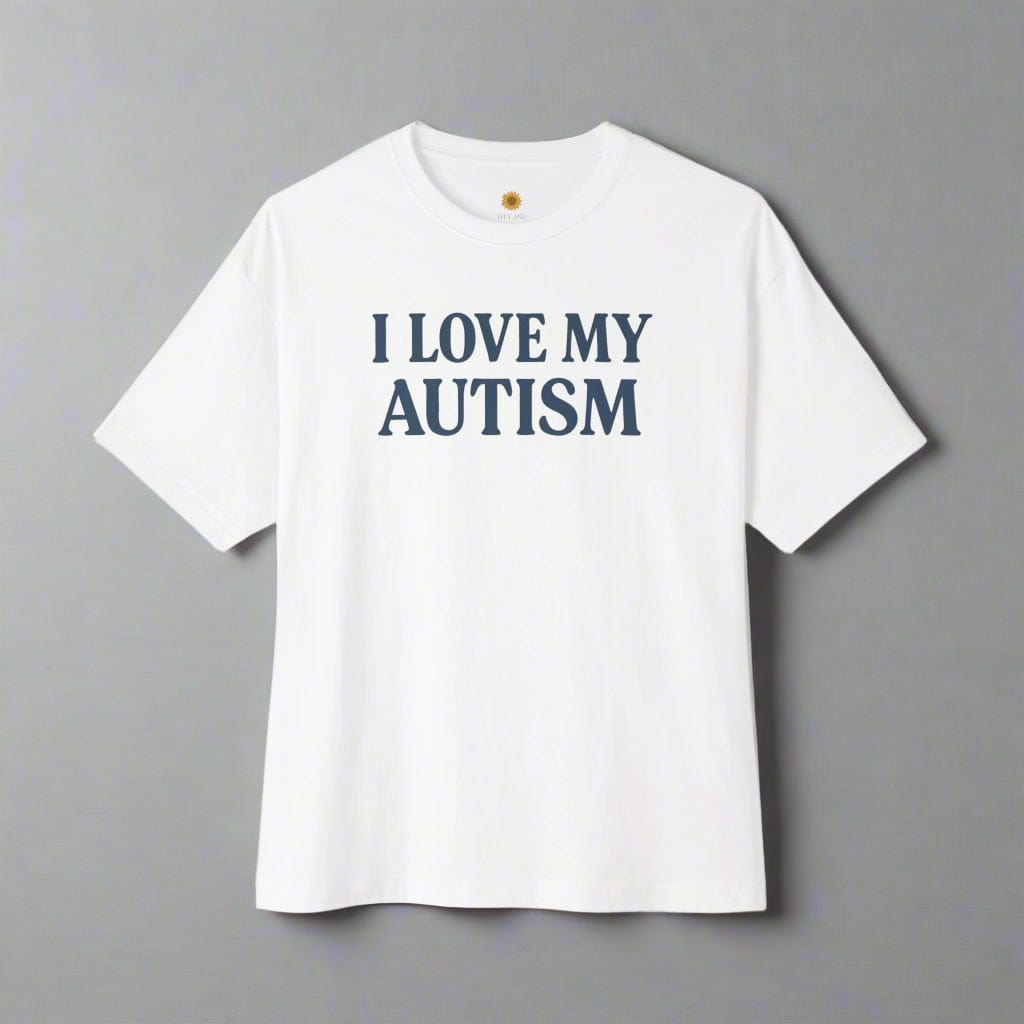Autism Workplace Accommodations: Your Rights, Examples, and How to Ask for Support

Written by the HeyASD Editorial Team
For many autistic adults, the workplace can feel like a maze of noise, expectations, and invisible rules. You give everything you have — only to leave each day feeling drained, misunderstood, or on the verge of burnout. The truth is, you’re not the problem. The environment is.
Most workplaces are designed around neurotypical communication, focus, and energy patterns. For those who are autistic — especially newly diagnosed adults — it’s easy to assume you simply need to “try harder” or “fit in better.” But there’s another, more powerful reality: you have the right to ask for support that makes your job accessible, sustainable, and fair.
This guide will walk you through what autism workplace accommodations really mean, how to identify the supports that could make a difference, and the exact steps to take when asking for them. Because thriving at work shouldn’t come at the cost of your well-being — and understanding your rights is the first step toward change.
Understanding Workplace Accommodations for Autism
Workplace accommodations for an autistic employee are simply changes to the work environment or the way things are usually done. These adjustments make it possible for you to do your job effectively by removing barriers related to your autism.
Think of them as tools that create a more accessible and less overwhelming workplace. Below, we'll explore what these adjustments look like in practice, why they matter for creating an equitable environment, and how they are protected under the law.
What Are Workplace Accommodations and Why Do They Matter?
So, what does 'workplace accommodations' mean for autistic adults? They are adjustments or supports that make your work environment more accessible and less overwhelming. This could be as simple as using noise-canceling headphones to manage sound, having a flexible schedule to manage energy, or receiving instructions in writing instead of verbally. These changes are designed to help you succeed.
These adjustments are critical because they help prevent both classic burnout and autistic burnout, which can significantly impact your health and job performance. When your needs are met, you can be more productive and engaged in your role. The reason accommodations exist is to ensure you have the same opportunity for success as your neurotypical peers.
Ultimately, providing accommodations is a win-win situation. It allows you to contribute your best work, boosts your well-being, and helps your employer retain a valuable employee. It’s about creating a work environment where your unique strengths can shine.
The Meaning of Reasonable Adjustments for Autism
The term "reasonable adjustments" or "reasonable accommodations" is often used in a legal context, particularly under laws like the Americans with Disabilities Act (ADA). It refers to any change in the work environment or in the way things are customarily done that enables an employee with a disability to enjoy equal employment opportunity. The Equal Employment Opportunity Commission (EEOC) provides guidance on this.
For autistic adults, these adjustments are tailored to address specific challenges you might face. They are considered "reasonable" if they don't cause the employer "undue hardship," which means a significant difficulty or expense. Most accommodations are low-cost or free. Resources like the Job Accommodation Network (JAN) offer extensive lists of ideas.
Some examples of reasonable adjustments for autistic employees include:
-
Providing a quieter workspace away from high-traffic areas.
-
Allowing the use of written communication as the primary method.
-
Offering flexible work hours or remote work options.
-
Breaking down large projects into smaller, more manageable tasks.
Equity vs. “Special Treatment” in Work Environments
It is crucial to understand that workplace accommodations are about equity, not "special treatment." Equality means giving everyone the same thing, while equity means giving everyone what they need to be successful. A ramp into a building provides equity for a wheelchair user; it is not special treatment. In the same way, accommodations provide you with the tools you need to level the playing field.
An equitable work environment recognizes and supports neurodiversity, acknowledging that different people have different needs. When employers create an autism-friendly work environment, the benefits often extend to all employees. For instance, clear communication and structured workflows can help everyone, not just autistic team members.
This focus on equity helps foster a culture of inclusion and respect, where all workers can thrive. It leads to:
-
More productive employees who feel supported.
-
Increased job satisfaction and retention.
-
A stronger, more diverse, and innovative team.
Common Workplace Challenges Faced by Autistic Adults
Many autistic adults face a unique set of workplace challenges because most professional environments are not designed with neurodiversity in mind. These difficulties are not a reflection of your ability or intelligence but are often a mismatch between your needs and the environment.
Understanding these common hurdles is the first step toward identifying effective accommodations. The following sections will cover specific challenges related to sensory processing, executive dysfunction, social communication, and the emotional toll these can take.
Sensory Overload and Managing Sensory Triggers
Sensory overload is a common experience for autistic people. Your brain may process sensory information—like sounds, lights, and smells—more intensely than a neurotypical brain. Standard office environmental factors, such as the hum of fluorescent lights, loud noises from conversations, or strong perfumes, can become overwhelming.
This constant sensory input can make it incredibly difficult to focus and can quickly lead to exhaustion, stress, or even a shutdown. A shutdown might look like you becoming very quiet or passive in a meeting when, in reality, your brain is completely overwhelmed and unable to process more information.
Managing these sensory triggers is key to maintaining your well-being and productivity. Accommodations that create a more controlled sensory environment, such as permission to wear headphones or work in a space with dimmer lighting, can make a world of difference. Finding sensory-friendly items, like a comfortable hoodie from an autism store, can also provide comfort.
Executive Dysfunction and Task Prioritization Issues
Executive functioning refers to the mental skills that help you manage time, pay attention, and get things done. Many autistic people experience challenges with executive functioning, which can affect task management and prioritization at work. This has nothing to do with your motivation or competence; it's simply a difference in how your brain organizes information.
You might find it difficult to start a large project, switch between different tasks, or estimate how long something will take. This can be especially true if you are navigating a new ASD diagnosis and still learning about how your brain works. Different people will have different levels of difficulty with these skills.
Reasonable accommodations for an autistic employee who struggles with executive functioning and time management can be very effective. Some examples include:
-
Using project management tools or an autism app to break down tasks.
-
Receiving written checklists and clear deadlines for projects.
-
Having regular check-in meetings with a supervisor to help prioritize tasks.
Communication Differences in a Neurotypical Setting
Communication differences are another common hurdle in a neurotypical setting. You may prefer direct, literal, and clear communication, while workplace conversations are often filled with subtext, idioms, and unspoken rules. This can make social interaction with neurotypical employees confusing and stressful.
You might find frequent phone calls or unstructured large group meetings particularly draining. The pressure to interpret non-verbal cues or participate in spontaneous social situations can consume a lot of mental energy, leaving less for your actual work.
Managers can support autistic employees with communication differences by making small but impactful changes. These adjustments help ensure that information is exchanged clearly and without misunderstanding.
-
Providing agendas before meetings and summaries afterward.
-
Using written communication, like email or instant messaging, for important instructions.
-
Giving specific, direct feedback instead of vague suggestions.
Burnout, Shutdown, and Rejection Sensitivity Dynamics
Constantly navigating a world not built for your brain can lead to autistic burnout. This is an intense state of physical, mental, and emotional exhaustion that goes beyond typical work stress. It can result from the cumulative effect of sensory overload, masking (hiding autistic traits), and managing executive function and communication challenges. This can lead to shutdowns, where you may temporarily lose the ability to speak or function.
Many autistic people also experience rejection sensitivity, which is an extreme emotional sensitivity to criticism or perceived rejection. This can make performance reviews or even casual feedback feel intensely personal and threatening. These different needs for emotional safety are often overlooked in the workplace.
Find Your Calm
Feeling overstimulated or drained after work? Our weighted blankets and sensory-calming décor are made to help you recharge in peace.
Find Your Calm →
Protecting your mental health is paramount. Accommodations that reduce daily stressors are a direct way to prevent burnout and manage rejection sensitivity. Having the option to take short breaks to decompress, skip non-essential meetings, or work from home can give you the space needed to regulate and recharge.
Examples of Reasonable Accommodations for Autism at Work
Reasonable accommodations are often simple, low-cost adjustments that can dramatically improve your job performance and well-being. The best types of accommodations are those tailored to your specific needs, whether they relate to your environment, schedule, or communication style. Many of these changes are awareness-based rather than expensive.
The goal is to create a sensory-friendly workplace where you can focus and do your best work. In the sections that follow, we will explore practical examples of accommodations across several key areas, from physical workspace adjustments to tools that support organization.
Sensory-Friendly Workplace Adjustments
Creating a sensory-friendly workplace is one of the most effective ways to reduce sensory overload and improve focus. These adjustments aim to minimize overwhelming environmental stimuli like loud noises or harsh lighting. A sensory-friendly workplace might offer a quiet area or allow modifications to your personal workspace.
Finding a safe space where you can decompress is vital. This could be a designated quiet room or even your own desk if it’s in a low-traffic area. Having control over your immediate environment allows you to manage sensory input before it becomes overwhelming. You can also find tools like sensory blankets or comfortable autism hoodies at an autism store to help regulate.
Here are some practical examples of sensory-friendly workplace adjustments:
-
Permission to wear noise-canceling headphones or earbuds.
-
Providing alternative lighting, such as desk lamps, instead of overhead fluorescent lights.
-
Having a workspace away from high-traffic areas, printers, or other sources of noise.
-
Implementing a fragrance-free policy to reduce overwhelming smells.
-
Allowing flexible seating options, like a yoga ball or standing desk.
Flexible Scheduling and Remote or Hybrid Work Options
Flexibility in your schedule can be a game-changer for managing energy levels and improving time management. The traditional 9-to-5 workday doesn't suit everyone, and having the autonomy to work when you are most productive can make a huge difference. This could involve adjusting your start and end times or having a more flexible break schedule.
Remote or hybrid work options are another powerful accommodation. Working from home eliminates the sensory stress of commuting and navigating a busy office. It gives you complete control over your environment, from lighting to noise levels. Even for remote autistic employees, asking for accommodations like flexible deadlines or structured communication is important.
These scheduling adjustments allow you to work in a way that aligns with your brain's natural rhythm.
-
Flexible work hours (e.g., starting earlier or later).
-
The option for remote work or a hybrid work model.
-
A predictable meeting schedule with advance notice.
-
Extra time or flexible deadlines for certain tasks when needed.
Written Communication and Reduced Verbal Demands
Reducing the reliance on verbal communication can significantly lower cognitive load and improve job performance. For many autistic people, written communication is clearer, less ambiguous, and easier to process than spoken words. It also provides a record that you can refer back to, which is helpful when memory or processing is a challenge.
Replacing spontaneous phone calls with scheduled calls or using email and instant messaging allows you to formulate your thoughts without the pressure of an immediate response. This simple change can reduce anxiety and prevent misunderstandings. It ensures that instructions are received accurately and that you have time to process them.
Here are some accommodations that prioritize written communication:
-
Receiving instructions, tasks, and feedback in writing.
-
Using email or instant messaging as the primary mode of communication.
-
Providing agendas for meetings beforehand and sending written summaries afterward.
Task Support Tools and Organizational Strategies
For autistic adults who struggle with executive functioning, task support tools and organizational strategies are invaluable. These accommodations provide the external structure needed to stay on track with time management and task management. There are many digital and physical tools that can help.
Technology can be a powerful ally. There are many apps and software programs designed for project management, to-do lists, and reminders. Some emerging autism AI tools, such as the promising Ariel platform, can also help organize workflows. For more personalized support, some autistic employees benefit from working with job coaches who can help develop organizational systems.
Here are some tools and strategies that can help you stay organized at work:
-
Using a digital autism app or software like Trello or Asana to manage projects.
-
Creating detailed checklists and visual schedules for daily or weekly tasks.
-
Setting automated reminders for deadlines and meetings.
Wellbeing Supports: Quiet Rooms, Break Policies, and Animal Assistance
Accommodations focused on well-being are essential for maintaining your mental health and preventing burnout. These supports recognize the need for moments of quiet and decompression throughout the workday. Having a safe space to retreat to when you feel overwhelmed is not a luxury; it's a necessity for many autistic people.
This space could be one of the dedicated quiet rooms that some sensory-friendly workplaces offer, or simply permission to take short breaks in an unused office or outdoor area. Flexible break policies that allow for more frequent, shorter breaks can also be more effective for regulation than one long lunch break.
Beyond physical spaces, well-being supports can include:
-
Access to a designated quiet room or a private safe space to decompress.
-
A flexible break policy allowing for short, frequent breaks as needed.
-
Allowing a service or assistance animal in the workplace.
"Accommodations aren’t about getting special treatment — they’re about removing barriers so you can do your best work without breaking yourself to fit in."
How to Request Autism Workplace Accommodations
Asking for workplace accommodations can feel daunting, but it is an important act of self-advocacy. The law requires employers to engage in an "interactive process" with you to find a solution. This means it should be a collaborative conversation, not a battle. Preparing for your accommodation request will help you communicate your needs clearly and confidently.
Following best practices can make the process smoother. This involves reflecting on your needs, deciding how to disclose, preparing your request, and communicating effectively. The following steps will guide you through how to do this.
Self-Reflection: Identifying Stressors and Accommodation Needs
The first step to requesting accommodations is self-reflection. Before you can ask for what you need, you have to understand what your specific challenges are. Think about your work environment and daily tasks. What parts of your day cause the most stress, anxiety, or fatigue? Identifying these patterns is key.
If you have a recent autism diagnosis, this process might be new to you. Try keeping a journal for a week or two. Note when you feel overwhelmed, distracted, or exhausted. What was happening at that moment? Was it the noise level, a vague instruction, or an unexpected meeting? Connecting the trigger to your reaction will help you pinpoint your different needs.
This self-assessment will help you build a list of potential accommodations.
-
What specific tasks or situations are most challenging?
-
What helps you feel calm and focused?
-
What changes in the work environment would make the biggest positive impact?
Deciding Whether and How to Disclose Autism at Work
Deciding to disclose your autism at work is a personal choice. To receive formal workplace accommodations under the law, you will likely need to disclose your diagnosis to HR or your manager. However, how you do it is up to you. Fear of stigma or discrimination is valid, as autism is one of the many invisible disabilities that can be misunderstood.
You don't always have to use the word "autistic." You can choose to describe your challenges and needs without naming the diagnosis. For example, you could say, "I have sensory processing differences that make it hard to focus in a noisy environment," or "I work best with clear, written instructions." This approach focuses on the solution rather than the label.
However, be aware that for legal protections and more significant accommodations, your employer may have the right to request medical documentation of your diagnosis. It's a balance between your comfort and the necessity of disclosure to get the support you need.
Steps to Prepare Documentation and Request Meetings
Once you've identified your needs, it's time to prepare your accommodation request. While a verbal conversation is important, putting your request in writing creates a formal record. This can be a simple email to your manager or HR outlining the specific workplace accommodations you are requesting.
Your employer might ask for documentation from a medical professional to verify your diagnosis and the need for accommodations. This is a standard part of the process. You can ask your doctor or therapist for a letter that confirms your diagnosis and recommends specific adjustments. Resources like the Job Accommodation Network (JAN) have sample letters you can use as a guide.
Follow these steps to prepare:
-
Write a clear and professional email detailing your requested accommodations.
-
Gather any necessary medical documentation.
-
Schedule a private meeting with your manager or HR to discuss your request.
Communicating Needs Effectively With HR or Your Manager
When you meet with HR or your manager, the goal is to have a collaborative conversation about communicating your needs. Frame your request in a positive light, focusing on how these accommodations will help you perform your job more effectively. You are not asking for an advantage; you are asking for the tools to do your best work.
Stay calm and professional. Explain the challenges you face and how your proposed solutions will address them. Be prepared for a discussion. Your employer might have questions or suggest alternative accommodations. This is part of the "interactive process." Working with job coaches or practicing the conversation beforehand can help you feel more confident.
Here are some tips for the meeting:
-
Start by saying something like, "I'd like to discuss some adjustments that will help me be more productive in my role."
-
Be specific about what you need and why.
-
After the meeting, send a follow-up email summarizing what was discussed and the agreed-upon next steps.
Legal Rights and Protections for Autistic Employees (US Focus)
In the United States, autistic employees have legal protections against discrimination. The primary law governing this is the Americans with Disabilities Act (ADA). The ADA requires covered employers to provide reasonable accommodations for employees with disabilities, and the Equal Employment Opportunity Commission (EEOC) has clarified that autism is a condition protected by this act.
Understanding these legal protections is empowering. It means you have the right to ask for support without fear of retaliation. The following sections will provide a brief overview of your rights under the ADA and what to do if your request is not handled appropriately. Please note this is for informational purposes and is not legal advice.
ADA Autism Accommodations and Employer Responsibilities
Under the ADA, employers with 15 or more employees have a responsibility to provide reasonable adjustments for qualified autistic employees. A "qualified" employee is someone who can perform the essential functions of the job with or without accommodation. The employer must engage in the interactive process to find a suitable accommodation, unless doing so would cause an "undue hardship."
Filing a workplace accommodation request under the ADA is the formal process of asking for these changes. It typically begins with your disclosure and request to HR or a manager. The employer is then obligated to discuss your needs with you. The Job Accommodation Network (JAN) is an excellent resource for both employees and employers during this process.
Both parties have roles to play in ensuring ADA autism accommodations are successful.
|
Employee Role |
Employer Role |
|---|---|
|
Disclose the need for an accommodation. |
Engage in the interactive process in good faith. |
|
Explain how the condition impacts job tasks. |
Request reasonable documentation if the disability or need for accommodation is not obvious. |
|
Suggest potential reasonable accommodations. |
Explore potential accommodations and assess their effectiveness. |
|
Cooperate in the interactive process. |
Provide a reasonable accommodation unless it creates an undue hardship. Maintain confidentiality. |
What To Do If Your Request Is Denied or Dismissed
It can be disheartening if your accommodation request is denied or dismissed. However, a "no" is not always the final answer. Your first step should be to ask your employer for the reason for the denied request in writing. They must have a legitimate reason, such as claiming the accommodation would cause an undue hardship.
If your request is ignored, it's important to follow up in writing to create a paper trail. Remind them of their obligation to engage in the interactive process. Sometimes, a denial is a starting point for negotiating a different, more agreeable accommodation. Remember that having a formal diagnosis is crucial for enforcing your legal rights.
If you believe your rights are being violated, you have options.
-
Document every conversation, email, and meeting related to your request.
-
Continue to engage politely with HR to find an alternative solution.
-
If you suspect discrimination, you can seek advice from a disability rights organization or consider contacting the EEOC.
Empower Your Workday with Comfort and Clarity
From sensory-friendly tees to calming home décor, our products are designed by and for the autism community. Use code WELCOME10 for 10% off your first order. Because comfort at work starts with feeling safe in your own skin.
Start Your Comfort JourneyYou Deserve Comfort and Support at Work
Navigating the workplace as an autistic adult can feel overwhelming at times, but knowing your rights and understanding the accommodations available to you can change everything. These adjustments aren’t about special treatment — they’re about creating fairness, comfort, and space for you to do your best work without burning out. From flexible schedules to sensory-friendly environments, small changes can make a big difference.
As you learn to advocate for your needs, remember this: you are not alone. There’s a whole community of autistic adults building workplaces that finally fit us — not the other way around. You deserve support, comfort, and the freedom to show up as yourself every day.
Explore sensory-friendly products and resources made for the autism community →
Frequently Asked Questions
What are some common workplace accommodations for autistic employees?
Common workplace accommodations for an autistic employee include flexible schedules or remote work, noise-canceling headphones to manage sensory overload, and written instructions for better time management. Other examples are flexible deadlines on tasks, a quiet workspace, and regular check-ins with a manager to ensure clear communication and expectations.
What rights do autistic individuals have regarding workplace accommodations?
Autistic people have legal protections under the Americans with Disabilities Act (ADA), which mandates employers to provide reasonable ADA autism accommodations. A formal diagnosis is often required. The Job Accommodation Network (JAN) offers guidance. If a request is denied without a valid reason, you have legal recourse.
How can I approach my employer to request accommodations for autism?
To make an accommodation request, schedule a private meeting with your manager or HR. Clearly explain the workplace accommodations you need and how they will improve your job performance. This begins the interactive process. Following best practices, like putting your request in writing, creates a helpful record.
What are the benefits of providing accommodations for autistic employees in the workplace?
Providing workplace accommodations boosts job performance and retention. It fosters an inclusive culture that values diverse perspectives and supports the mental health of all employees. Supported employees are more engaged and productive, which benefits the entire organization. It's a key part of creating a truly modern and effective team.
On This Page
Frequently asked questions
What are the most effective workplace accommodations for autistic adults?
How can employers create a sensory-friendly workplace for employees with autism?
What types of disability accommodations are available for autistic adults at work?
How can autistic adults advocate for their workplace accommodations?
What communication tips help autistic adults succeed in the workplace?
How can coworkers support autistic adults through workplace accommodations?
What legal rights do autistic adults have regarding workplace accommodations?
How can autism support programs assist adults in maintaining employment?
What are common challenges autistic adults face at work and how can accommodations help?

About the HeyASD Editorial Team
Autistic‑owned • Values‑led • Sensory‑friendly design
We are autistic creators, writers, and advocates dedicated to producing resources that are practical, sensory-aware, and grounded in lived experience. Our mission is to make information and products that support the autistic community accessible to everyone, without jargon or condescension. Learn more about our team.
This article is written from lived autistic experience and an evidence-aware perspective. It is for general informational purposes only and should not be taken as medical, legal or therapeutic advice.
Always consult a qualified clinician or occupational therapist for individual needs and circumstances.

About Our Autism Blog
HeyASD isn’t just a store, it’s a calm, supportive space created by and for autistic adults. Our blog shares sensory-friendly tips, identity-affirming stories, and heartfelt resources for navigating life as an autistic person. Whether you're late-diagnosed, exploring your needs, or supporting someone you love, you're welcome here.
Thank you for reading. We hope these resources bring comfort and clarity.




































